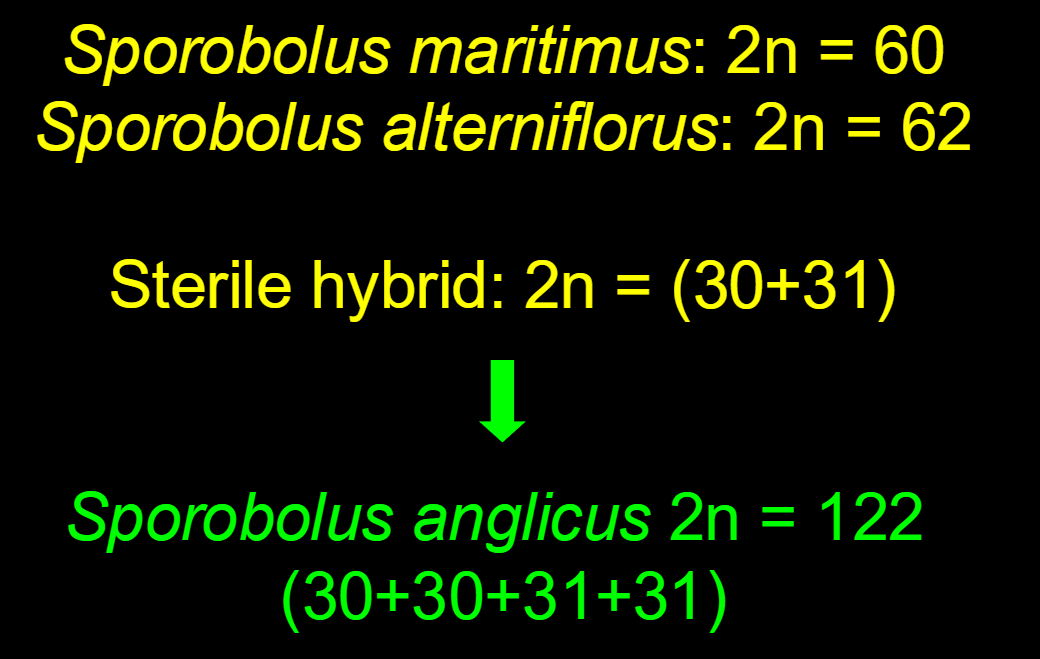Ch 6, Part 2: Chr. MT's: Variation in #/arrangement (SEPT 30)
1/11
Earn XP
Description and Tags
Part II: What are the developmental and evolutionary implications of polyploid?
Name | Mastery | Learn | Test | Matching | Spaced |
|---|
No study sessions yet.
12 Terms
What was Karpechenko’s first discovery
-tried to cross a radish and a cabbage
-eventually managed it, but was sterile
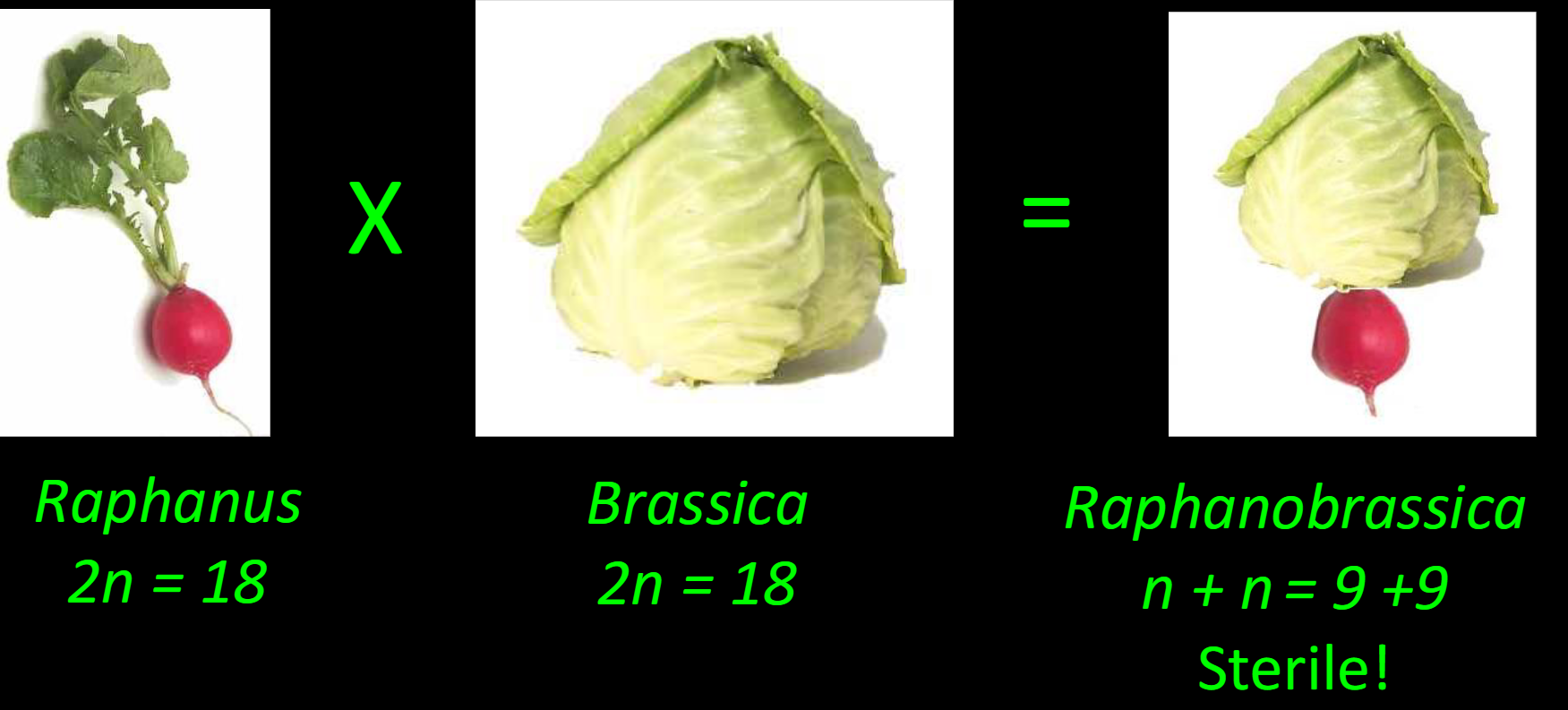
What was Karpechenko’s second discovery
-one hybrid turned out fertile, spontaneous chromosome doubling
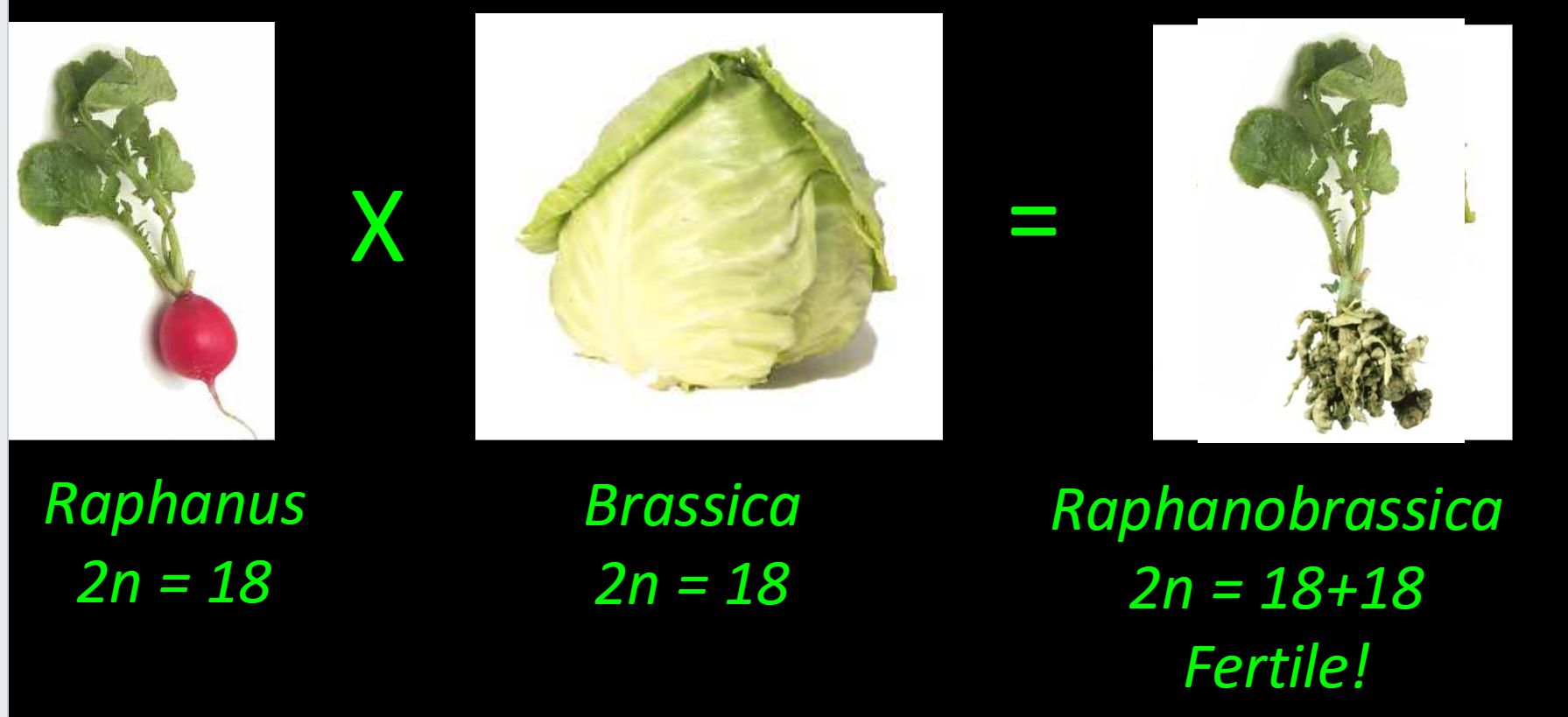
Define polyploidy
condition of having more than two complete sets of chromosomes
what type of polyploidy are
wheat
strawberries
seedless fruits
wheat: allohexaploid
strawberry: Autooctaploid
seedless: triploid, infertile
What are the 8 phenotypic effects of polyploidy
(bolded/underlined are important)
1. Larger cells: especially guard cells surrounding stomates
2. Larger flowers with more nectar
3. Larger seeds: Most crop grasses are polyploid
4. Larger pollen
5. Slower growth and development
6. Later flowering
7. Longer lived
(often transition from annual to perennial habit)
8. Hybrid vigor
(often weedy, ecological generalists)
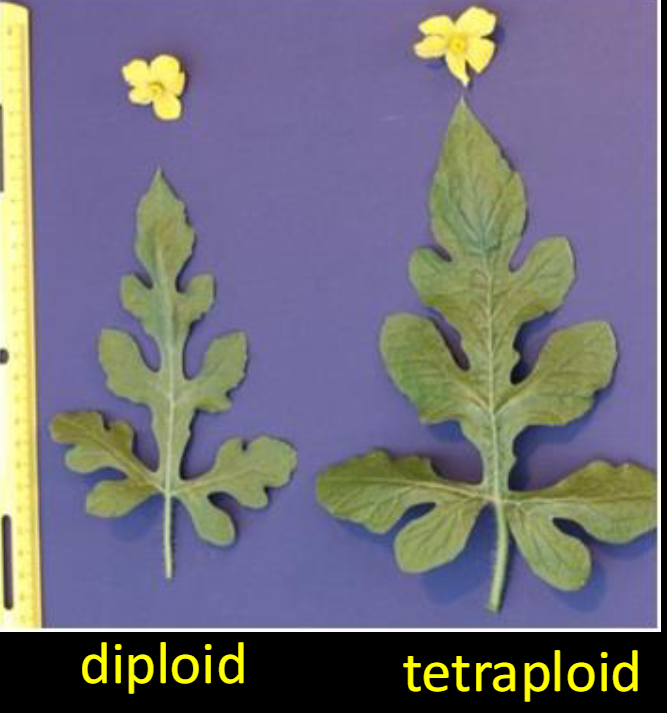
describe why polyploidy is evolutionary important
- - Polyploidy results in instant reproductive isolation from
diploid progenitors→ Speciation!
- Polyploids may be ecologically different from diploid
progenitors.
- Polyploidy results in an increase in genetic variation over
diploid progenitors, often including fixed heterozygosity at
loci.
how does polyploidy occur?
Define homoeologous
Spontaneous doubling of chromosomes in germ-line
-failure of proper formation of spindle fibers
-inducible experimentally by colchicine
homoeologous: chromosomes with similar arrangement of
loci but from different progenitors; may pair with reduced
affinity in meiosis I
Define autopolyploidy, amphiploidy, allopolyploidy
(with, how does polyploidy occur slide)
-Autopolyploidy: Multiplication of single chromosomal set
-Amphiploidy: Merger of structurally different chromosome
sets
Amphiploidy is called allopolyploidy when: the genomic
donors are considered to be in two different species
Go in detail of autopolyploidy
in meiosis?
in polyploidy?
instant speciation?
-In meiosis: homologous chromosomes fail to separate resulting in diploid spores, and therefore diploid gametes
-In polyploidy: plants undergo spontaneous doubling of chromosome number
-Instant speciation: Autopolyploid individuals are reproductively isolated from diploid parent population
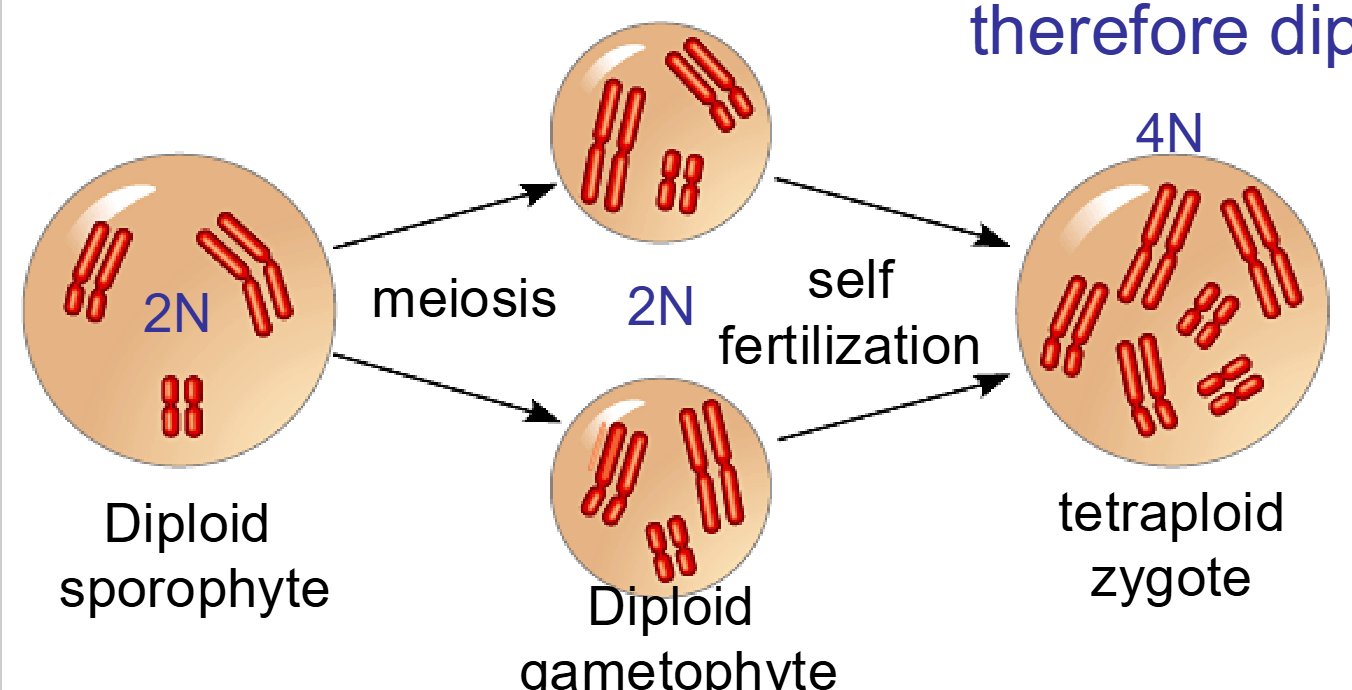
autopolyploidy phenomenon note fix later im lazy rn
Autopolyploidy is the phenomenon by which a plant will give rise to an offspring with twice as many chromosomes as itself; essentially a doubling of chromosome number in a single generation. In meiosis, a failure of homologous chromosomes to separate leads to spores that retain the full complement of chromosomes (remaining diploid rather than being haploid). These spores grow into diploid gametophytes, which in turn produce diploid gametes. When these unite on fertilization (as so often occurs in plants that can self) the result is a tetraploid zygote. This zygote has four copies of each chromosome rather than two. Further, if backcrossed with the parent plant it will produce an offspring that is triploid– homologous pairing in meiosis will fail (because there are an odd number of each chromosome, and the offspring will be effectively sterile). This results in complete reproductive isolation in a single generation. Because plants are capable of selfing and reproducing asexually, and because polyploids are often hardier than diploid progenitors, new polyploid speces are likely to grow in range, even to the exclusion of diploid progenitors.
Diploid to Tetraploid (2n to 4n)
why are autotetraploids difficult to tell apart
Although autotetraploids are reproductively isolated from
diploid progenitors, they can be difficult to tell apart. They have a tendency to produce larger fruits and flowers than their diploid relatives.
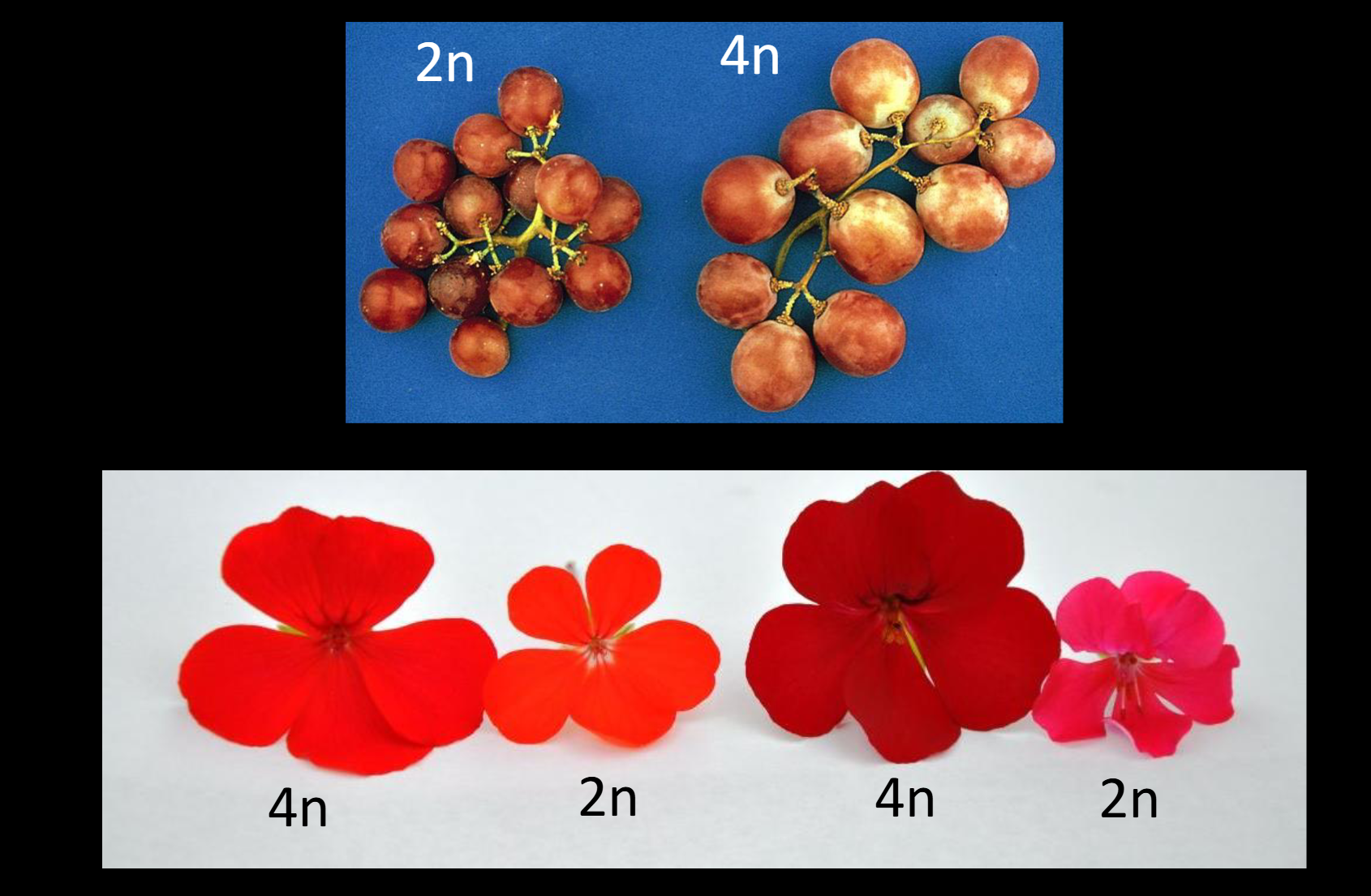
Define allopolyploidy
correlatoin with instant speciation?
-allopolyploidy: hybridization between two diploid species followed by doubling of chromosome number
-Instant speciation: Allopolyploid individuals are reproductively isolated from either diploid parent population
